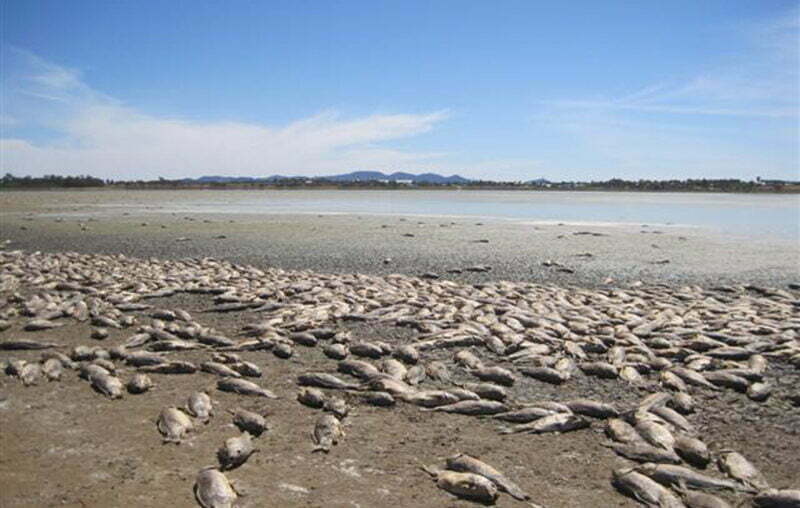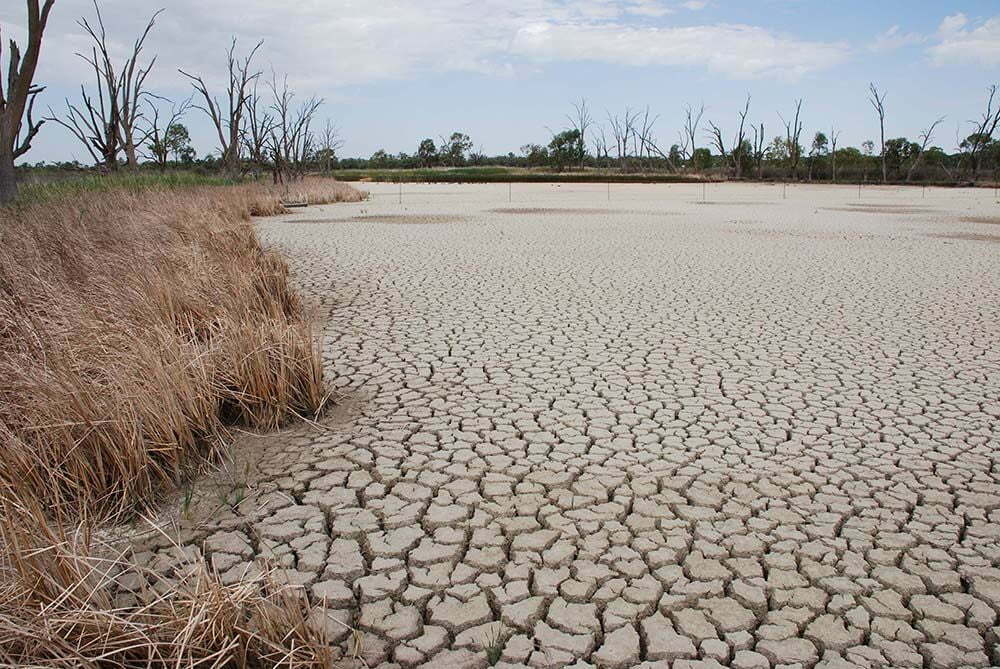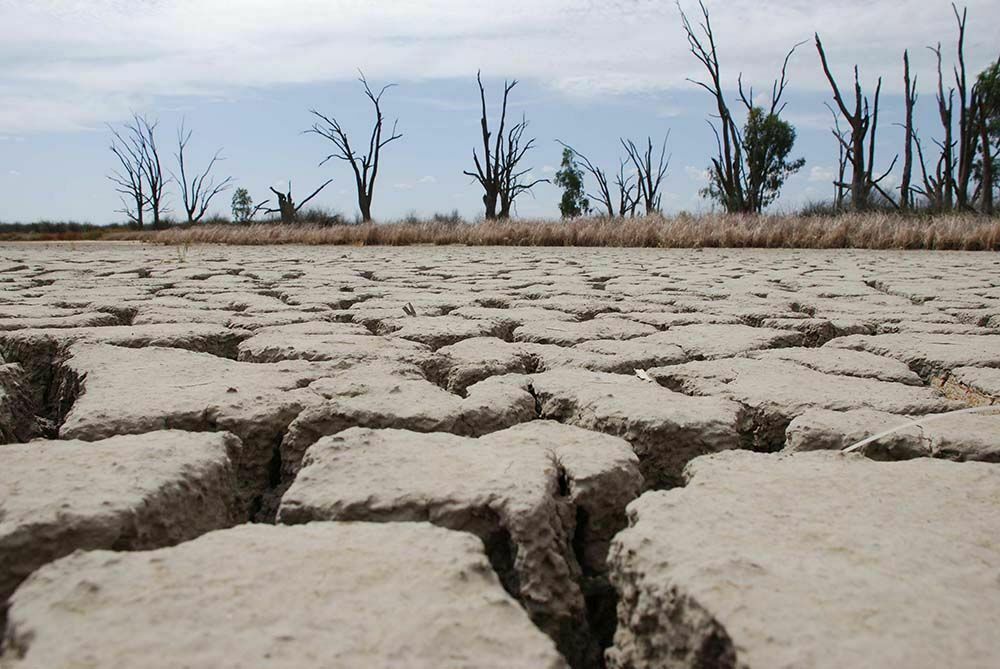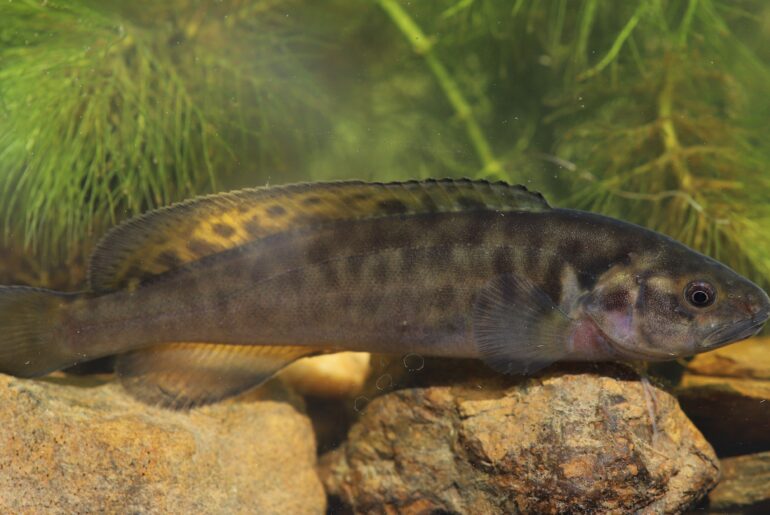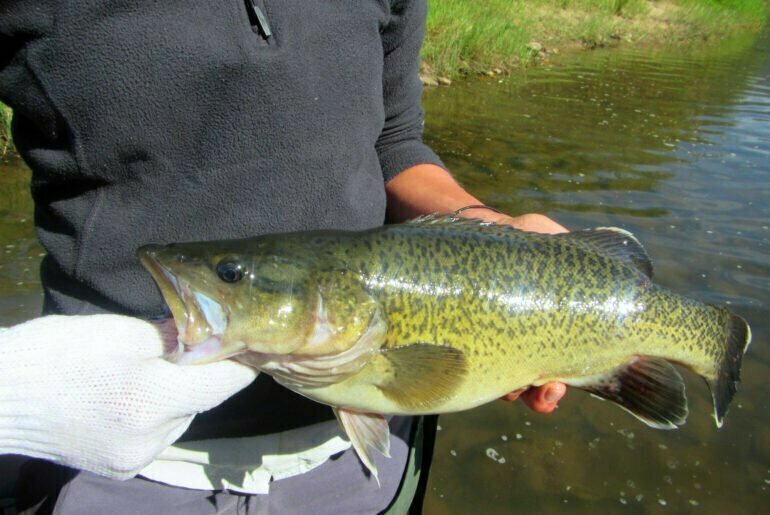Drought is a recurrent, natural event in the Murray-Darling Basin, and native fish have evolved to meet this challenge. Under natural conditions, they would have found refuge in remnant pools and waterholes, ready to disperse to new habitats once the drought had broken. They were much more abundant prior to the arrival of Europeans than now, and populations were correspondingly more resilient to environmental changes.
In the present day, flow regulation has extended and intensified the effects of drought, mainly through competition for water from agriculture. Native fish populations are much reduced and less resilient to change, owing to environmental changes, interactions with alien species, over-fishing and other flow related factors.
The record low inflows in 2006 of the extended drought that occurred from 1997-2010, provoked a range of management actions and highlighted the need for coordinated management reposes to the drought. In June 2007, the Murray-Darling Basin Commission (MDBC) convened an ‘Expert Panel’ to consider the management of native fish during drought.
The Panel was mindful that river systems across the Basin vary in their hydrology and ecology. For example, the Darling sub-basin has highly variable annual flows in a warm, arid or semi-arid climate, and the Murray sub-basin has less variable annual flows with cool upper reaches that provide almost half the Basin’s annual discharge.
The Panel also considered ways that dams, weirs and diversions could affect the responses and recovery of fish populations, particularly in the intensively-regulated Murray system. The Panel’s report was intended to inform the MDBC and other federal and state agencies.
‘Fish out of water – Lessons for managing native fish during drought’ Native Fish Strategy Drought Response Report
Findings:
The Panel identified a range of crisis management responses and recommended several high priority actions:
- Identify, catalogue and protect drought refuges. Special protection is warranted for refuges with substantial depth and volume (including weir pools), high fish diversity or populations of threatened species.
- Develop integrated, coordinated Drought Action Plans for Basin-wide responses by regional agencies, jurisdictions and the MDBC.
- Include drought management of recreational fisheries (e.g. possible interim closures) as part of local Drought Action Plans.
- Develop Basin-wide Threatened Species Recovery Plans, with specific drought management actions.
- Rigorously apply existing legislation to protect threatened species and populations.
- Intensify pest species management to take advantage of opportunities for control provided by drought, including measures to prevent recolonisation.
These actions were recommended to avoid:
- Automatically using native fish restocking as the fallback management response. In the long–term this dilutes the gene pool and reduces the ability to resist disease and adapt to environmental changes.
- Stocking alien fish. Predators like trout, for example, place additional stress on already-depleted native populations.
- Increased fishing of depleted populations, or in drought refuges. This reduces the breeding stock needed to recover once the drought ends.
- Increased access by livestock to refuges or riparian zones. Stock can be very destructive to fish habitats
The Panel identified two high priority measures to aid fish population recovery after drought:
- Monitor local fish populations over several years, recognising the recovery times needed by different species and different habitats;
- Promote field studies to advance the Native Fish Strategy and gather knowledge for use in future droughts.
Actions to avoid during the recovery phase are:
- Assuming that fish stocks will automatically recover, or that this will occur quickly;
- Addition of flow regulators, as these are barriers to free movement by fish.
Management implications:
- Drought is a regularly occurring, natural event in the Murray-Darling Basin, and the native fish have evolved to meet the challenge.
- The existence and accessibility of drought refuges is of critical importance to most fish species
- In the present day, flow regulation has extended and intensified the effects of drought, mainly through competition for water from agriculture.
- Native fish populations are much reduced and less resilient to change
- Native Fish populations are likely to take some years to recover following the return to‘normal’ climatic conditions
- Droughts will recur in future, and their frequency and effects may be further exacerbated by global warming associated with climate change.
- Droughts provide an opportunity for those involved in fish and water management to review lessons learned and plan for the future.
- Crisis management and recovery should be treated as separate processes
- Management actions are usually undertaken in response to a current crisis (flood, fire etc.) without any contingency planning in place. We need to embed planning for such events into day to day management actions, otherwise we are likely to keep ‘reinventing the wheel’ as such crises periodically occur.
You can read the full report here: Fish out of Water – Managing native fish during drought
Lintermans, M. and Cottingham P. (eds) 2007. Final Report of the Drought Expert Panel. MDBC Publication No. 29/07, Murray-Darling Basin Commission, Canberra.
